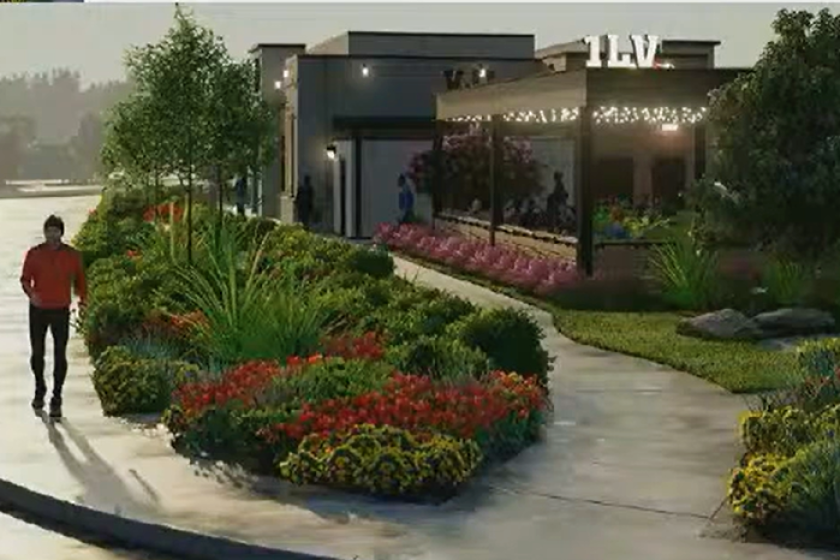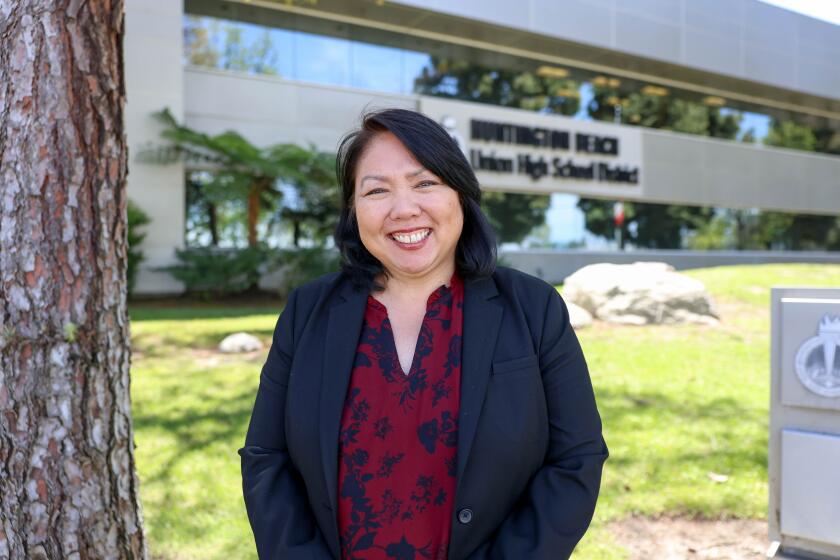Center of debate
Mike Swanson
Joan Irvine Smith fondly remembers spending summers at her family’s
beach home in Irvine Cove from the 1930s through the ‘50s -- when it
was the only home there.
The first occupied lot in the area has been vacant since 1957,
when then-general manager and board member of the Irvine Co., William
Bradford Hellis, ordered that the two Japanese tenant houses, service
shed and bath house be burned down for being too ugly for the
terrain, Smith said. Houses started popping up behind the bluff-top
lot formerly occupied by Smith’s home within the next few years.
The lot, on what’s now referred to as Abalone Point, has been
subdivided into three parcels in the last two years. The
now-houseless land Smith so fondly remembers is owned by Ron and
Yolanda Loder, who bought the parcel from Smith last year.
Some whose views would be affected by the proposed
13,000-square-foot house, 1,100-square-foot garage and
5,000-square-foot storage and mechanical area have vehemently opposed
he project at multiple Design Review Board meetings.
The project will be reviewed by the board one more time next
month.
“My mother and I always wanted to keep this area open,” Smith
said. “When Hellis burned down our place in ‘57, I was sick. I was so
upset with him. It was a cute house, and what made it so great is
that there was nothing else there.
“I had wanted the land how it was, but the Irvine Co. came in and
graded it in the early ‘60s,” she said. “You have to deal with what
you’re dealt.”
Smith joined the board of directors in 1957, but said she couldn’t
convince Hellis to leave the land alone. Once she learned much of
Irvine Cove had been subdivided in the mid-1950s, she began fighting
with the Irvine Co. to gain leasing rights to the large lot on
Abalone Point. In 1967, she finally won, but “didn’t do anything with
[the property] but clean the weeds.”
Now, with one parcel sold and two remaining, Smith is working with
residents in Irvine Cove and Abalone Point to convince the city not
to mess with their covenants, codes and restrictions so the residents
can decide how high houses can go. Irvine Cove codes allow a maximum
house height of 14 feet above the curb, while Abalone Point allows a
maximum of 16 feet above the curb. The Loder project’s been rejected
at six feet.
The fact that there once was a house on the lot in question ought
to be important to the Design Review Board, City Council and all
Laguna Beach residents, Smith said, because it could cause trouble
for people who want to tear down a house and build a new one on the
same lot.
People who buy at Irvine Cove and Abalone Point buy with the
neighborhood’s covenants, codes and restrictions in mind, and Smith
fears that they’ll be devalued -- thus affect property values -- if
the city overrides them.
“Once they start changing our C, C and R’s, the sky’s the limit,”
Smith said. “That will set a precedent affecting not only Abalone
Point and Irvine Cove, but all of Laguna.”
Some neighbors to the project say Laguna’s attention to view
equity should be looked at above a neighborhood association’s
covenants, codes and restrictions. The Design Review Board and City
Council have agreed thus far. Andy Alison, whose mother owns a house
that will lose some of its view if the Loder project is approved, has
been one of the project’s most vocal opponents.
“It is my understanding that a full-size replica of the Irvines’
ranch home is being built on the historic site near Jamboree Road,”
Alison said. “Maybe Joan Irvine Smith is indirectly suggesting that a
single replica of her former bluff-top beach home be built on the
land in question at Abalone Point.
“That would be a conservative departure from what has been
submitted to the Design Review Board to date.”
The Alison house, which was built in the ‘60s, and others affected
by the proposed Loder lot were not bought as view lots and didn’t
command view prices, Smith said.
“I’ve had this property for a long time, and I finally decided to
do something with it,” Smith said. “I’ve seen the area change so
much, and you have to change right along with it. Like I said, I wish
this land was open, but it isn’t, and I doubt it ever will be again.”
All the latest on Orange County from Orange County.
Get our free TimesOC newsletter.
You may occasionally receive promotional content from the Daily Pilot.



